
When the clock ticks over from 11:59 PM on 31 December to 12:00 AM on 1 January people kiss, drink champagne, confetti falls, and everyone celebrates. What else happens? Birders’ year lists tick over from whatever number they achieved in the previous year to zero. And there is little that a birder likes about a list that is at zero. Sure, there is unlimited potential and every single species can once again be counted, but, nonetheless, birders often put forth the energy to get that list built up again, to erase that zero, and to hopefully put three (or even four) digits in its place before the end of the year.
I am no different from other birders that keep a year list and while my 511 species in 2013 wasn’t an absurdly good year it also wasn’t half-bad. But, like everyone else, my 2014 year list started at zero and I couldn’t wait to get it going!
I even had a plan to make sure that my first bird of the year would be a good one. Get to my early morning birding destination while it was still dark, sit in the car with the radio on to prevent the inadvertent identification of a run-of-the-mill bird by voice, and wait for a Short-eared Owl to fly past on the hunt. Amazingly, it worked! Short-eared Owl is a great way to start off a birding year!
Since then, I have dropped and broken my camera and lens, bought a new camera, got the lens replaced, and seen a bunch more birds. Here are pictures of some of them, minus the ones from the card that was in my broken camera, which is a different kind of card from the one that my new camera takes. Sooner or later I will borrow a card reader and get those pictures downloaded but in the meantime I think I have some pretty decent shots, like the Peregrine Falcon at Jones Beach that led off this blog post. Sit back and enjoy some of my first birds of 2014…
This Fox Sparrow at Flushing-Meadows Corona Park in Queens was really annoying. It kept foraging in the shadow of a tree, the only shade for hundreds of feet. So I waited him out and, eventually, he foraged his way into the sun.
I think Dunlin must occasionally have identity crises.
Why do birders still have to explain to people that American Robins are not that uncommon in winter? This one was hanging out near that Fox Sparrow, but on the sunny side of the tree. (Click to embiggen.)
Ruddy Ducks almost invariably make me happy. This one made me sad, mostly because I couldn’t figure out how it ended up with a rubber band wrapped around its head and through its mouth. Nor could I figure out how it could get it off again. (Click for a bigger version of the sadness.)
Yes, this is a lowly feeder picture, which some people don’t think is very cool. Personally, I think bird feeders have gotten more people into birds than anything else. Oh, and if you need to know, this is a Upside-down Seedpecker.
Horned Lark at Jones Beach. They are kind of boring. But they do serve their purpose, which is to draw your attention to the longspurs that you sometimes find hanging out with them.
Canvasback are awesome. This one was at the World’s Fair Marina in Queens, which is a great place to find them in winter. Notice that it is rubber band free. I wish the Ruddy Duck had used this Canvasback as an role model. (Click to embiggen.)
And, you know, it’s been at least a couple of days since we ran a blog post with a Snowy Owl in it. This one is in basic training, which it seems to be succeeding at, seeing as a pair of joggers and their dog passed within twenty feet of it without noticing it. That amused the heck out of me for some reason. (Click to embiggen.)
May 2014 bring you many birds and few rubber bands!
…





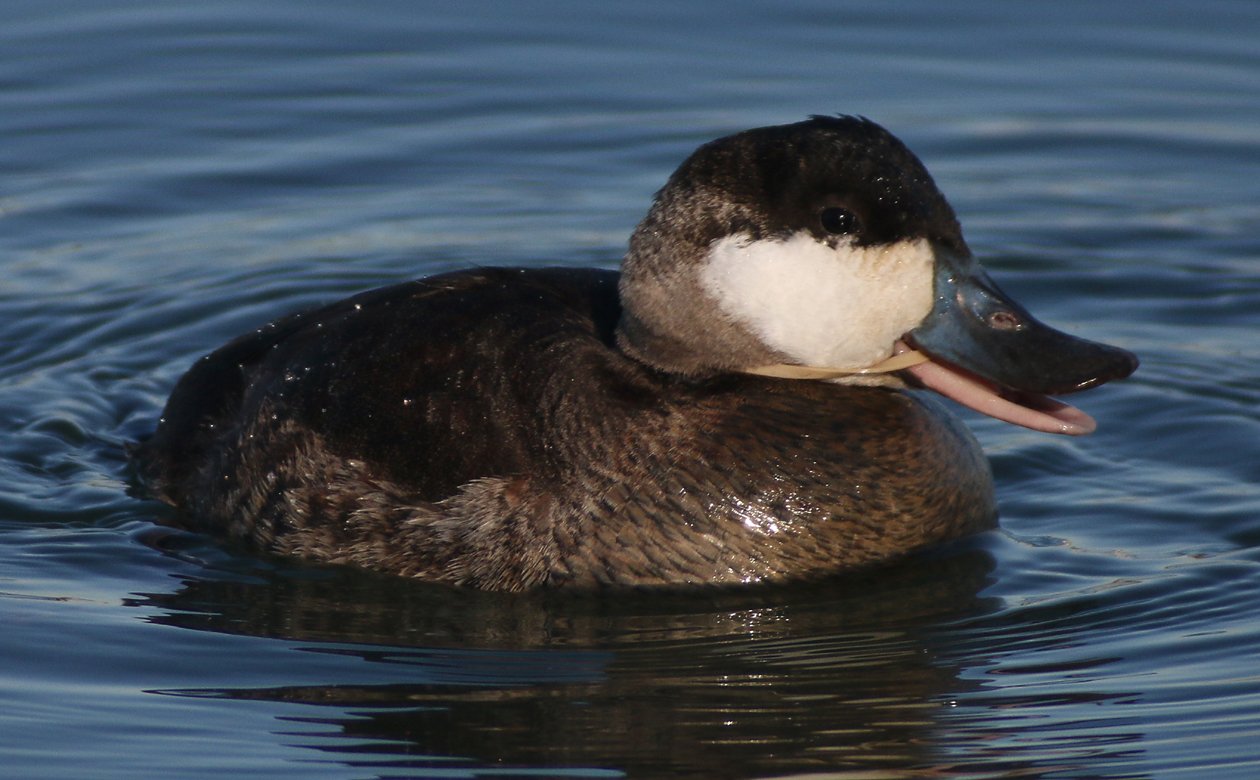
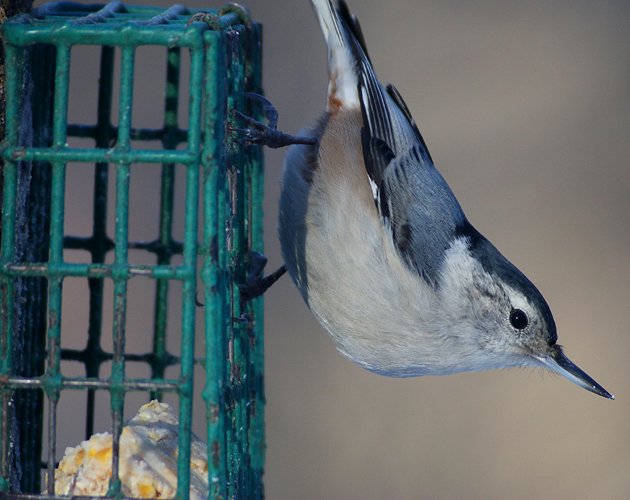
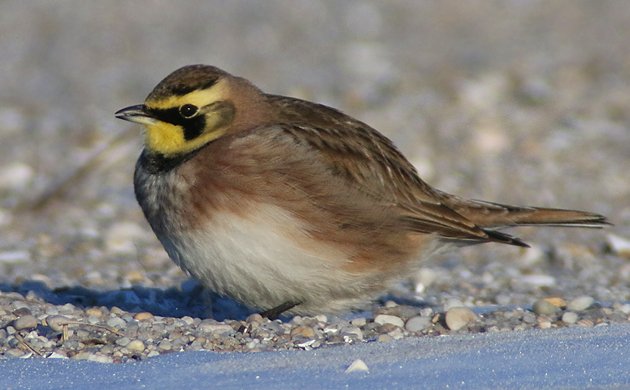
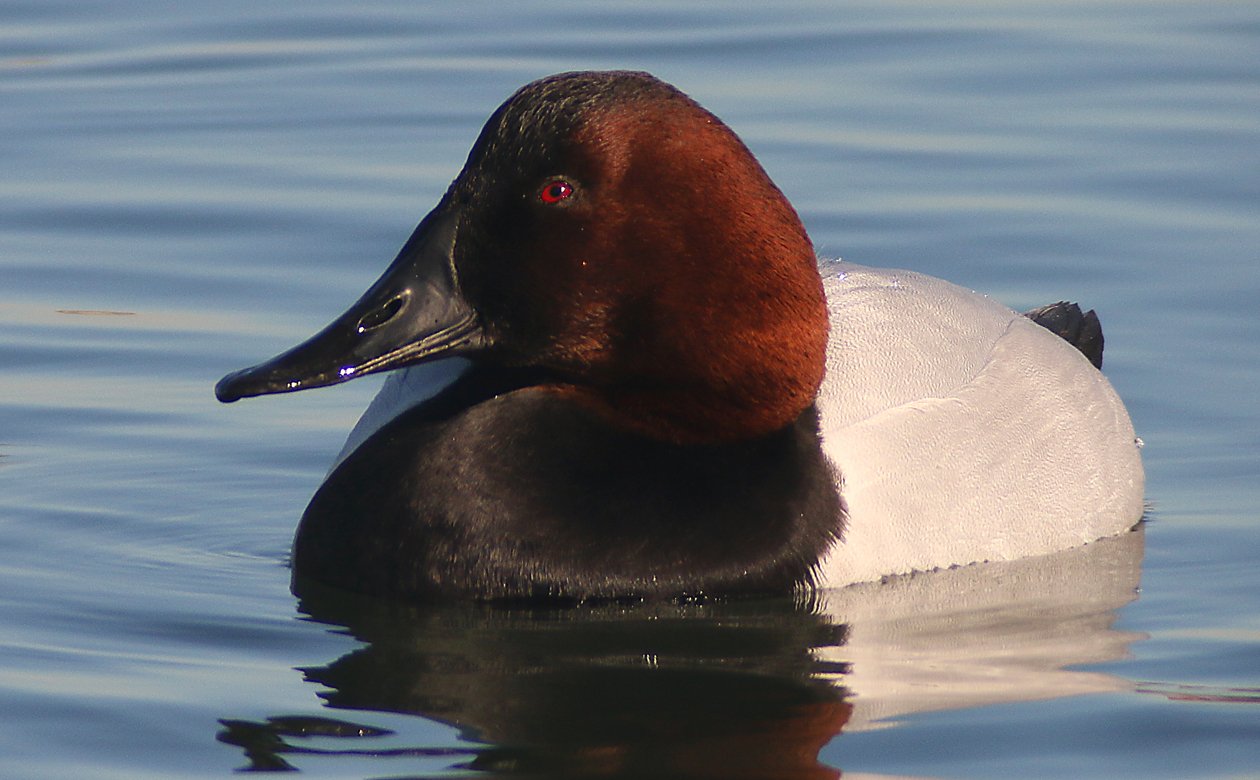
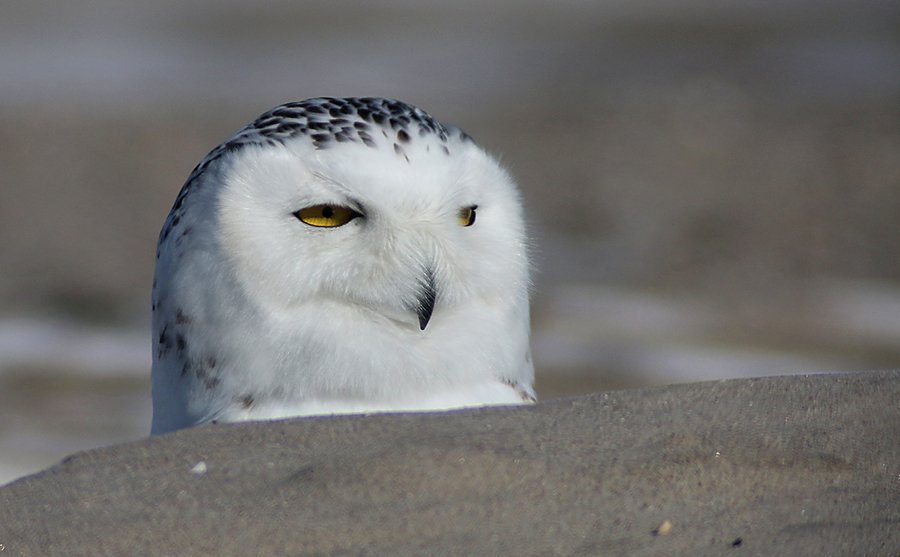











Unfortunately the Buffy Fish Owl I saw on the 31st after dark was long gone in the morning!
Horned Larks “kind of boring”? Are you quite sure you dropped your camera and not your head? 😉
Beautiful photos! The Canvasback is my favorite.
Duncan – at least you got it for 2013!
Jochen – Horned Larks ARE kind of boring. Give me a Lapland Longspur any day!
Thanks, Wendy. Those Canvasbacks are pretty darn nice!
Funny, the “boring” horned lark has eluded me thus far. Bring it in I say!